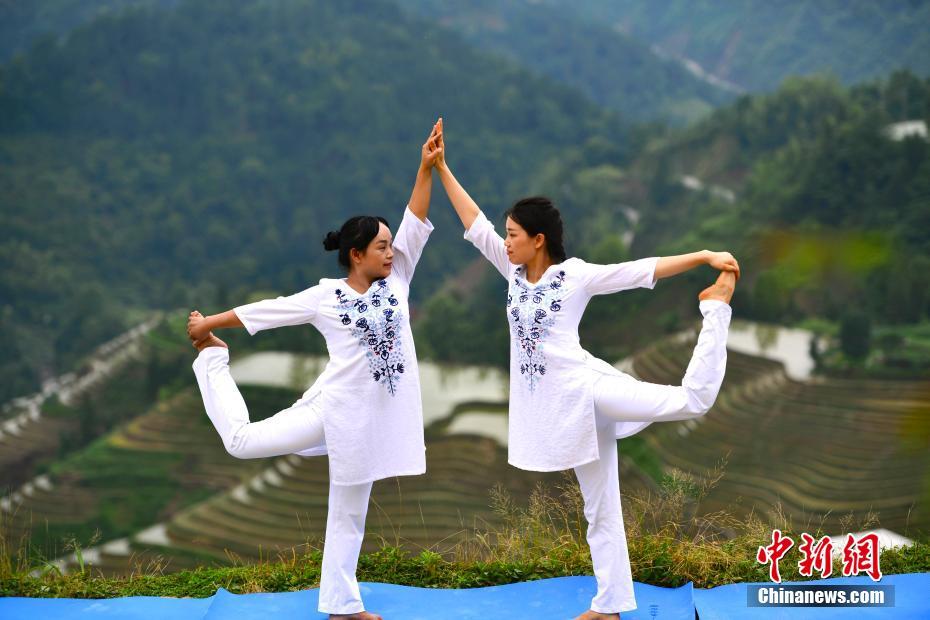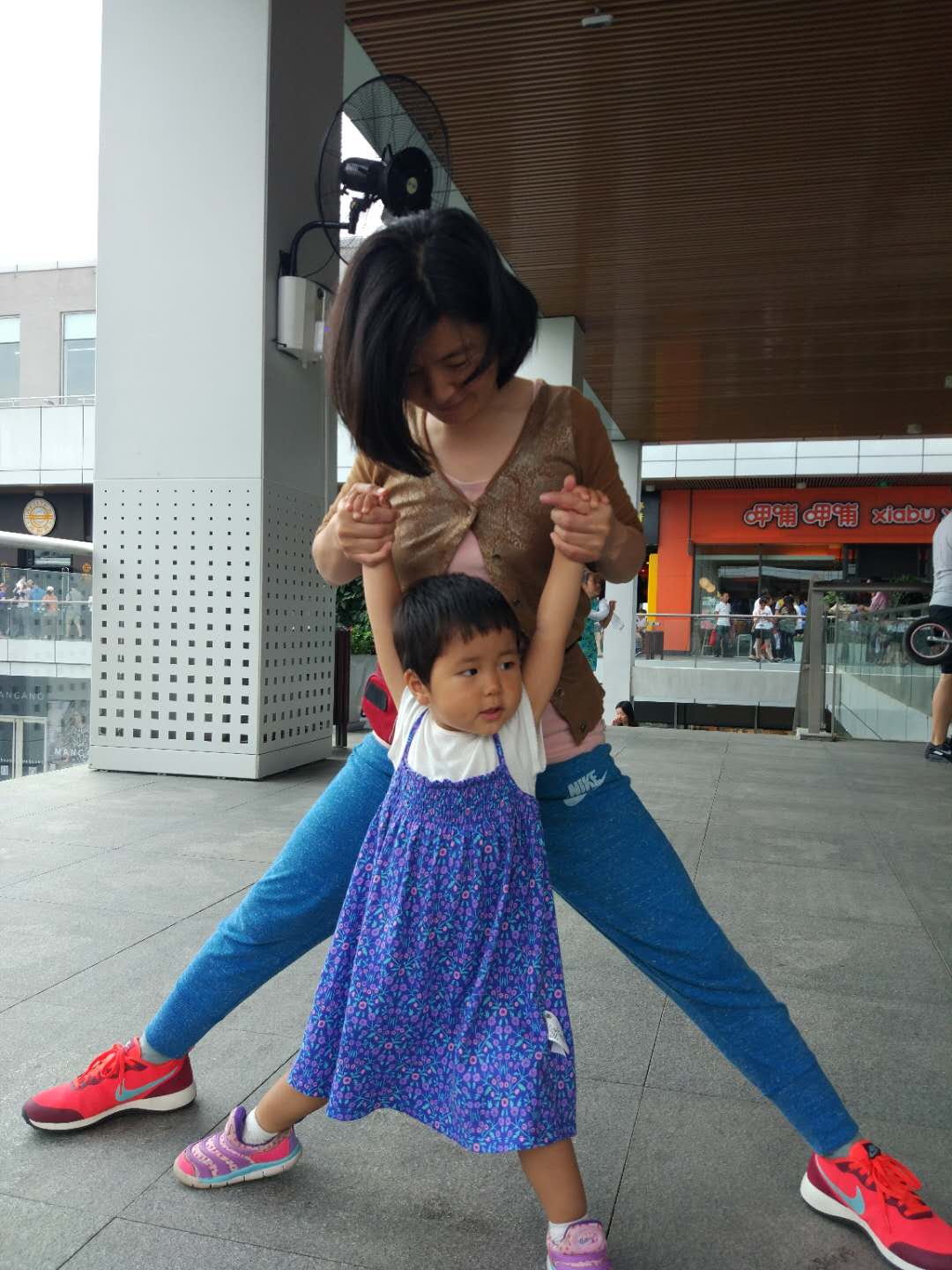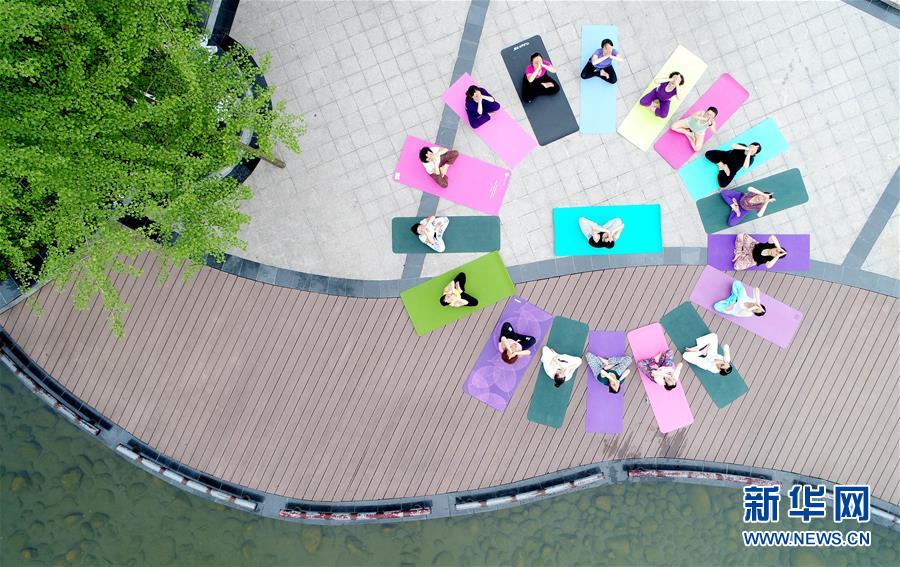By Qian Ding, CCTV.com reporter
June 21 is not just the longest day of the year in the northern hemisphere, it's also International Yoga Day which is celebrated annually since its inception in 2015. Every year, yogis from around the world hold various events to promote the physical, mental and spiritual practices that are attributed largely to India. With millions of practitioners and more than 10,000 main yoga schools nationwide, China is transforming into another yoga superpower.

Yoga was first introduced to the People's Republic of China in the late 1970s by Zhang Huilan, an internationally recognized yoga teacher also known as Wai Lana in the west. Her television series named "Yoga" started airing on China's predominant media CCTV from 1985 to 2000, which made it one of the longest running television series in China's TV history. Zhang Huilan was honored with the prestigious Padma Shri Award by the Indian government.

Zhang Huilan
Her influence is not limited to yoga. Zhang Huilan's colorful and flowery dressings brought freshness to China where people were mostly wearing gray, blue and green in the 1970s. With China's 'reform and opening up', more and more Chinese showed interest towards the outside world, her book Yoga-Qigong and Meditation has also been on sale for more than 25 years in the country.
Nowadays, yoga studios are sprouting all over Beijing, Shanghai and other Chinese first and second tier cities. According to "Yoga Blue Book: China Yoga Industry Development Report" released in 2017, most Chinese yoga followers are female in the age group of 25-40, affluent and living in big cities. The popularity of yoga is highly related with a city's economic development. The lowest number was found in poorer western provinces and autonomous regions, such as Tibet, Xinjiang and Qinghai.
In 2015, China's first dedicated yoga college, India-China Yoga College (ICYC) was established in accordance to one of 24 agreements reached between Chinese Premier Li Keqiang and Indian Prime Minister Narendra Modi during Modi's visit to China. The three-year program offers students yoga courses in both countries. Asana (poses), pranayama (breathing), physiology and yoga therapy are included in postgraduate study. Sanskrit, Hindi and Indian culture are also taught to eliminate cultural barriers. China-India yoga conferences sponsored by municipal governments were held to promote yoga practices to communities with featured courses from yoga masters.
But what do commoners think about yoga and the growing quest for this ancient aspirational activity? Here are some answers from yoga practitioners living in the country.
Bao Li, a doctor in her 30s living in Shanghai, told CCTV.com that her cervical pain caused by long hours of work has been alleviated after practicing yoga. She believes yoga can make her more fit to ease the pain of lumbar vertebra and legs.

Lanzi
Lanzi, a yoga teacher living in Beijing, said the reason why she started to practice yoga was to relieve pressure from the outside world. She said most of her students felt discontented about their bodies and mind, therefore the practice, branded as an ancient, mysterious and fashionable method of body-building with exaggerated health effects, meet the needs of the masses in China. She suggested practitioners not only focus on perfection of poses, but also live with a yoga spirit. For example, live in accordance to Yama, the first limb of yoga, which means no violence ( Ahimsa); no lying (Satya); no stealing( Asteya); sense control (Brahmacharya) and non-coveting (Aparigraha).

Zheng Huiqin
Zheng Huiqin, mother of a daughter from Hebei Province, said, "I like yoga because it can bring peace to my heart, make my body fit and lighten up my spirit. In this modern society filled with much competition, many people are suffering from sub-health. Yoga, with simple postures, can make our bodies fit and flexible. It stresses the unity of body and mind, which echoes the harmony philosophy of Chinese culture. Furthermore, When it's properly practiced, yoga could help open up the blocked meridians and vasculature, so the energy could cycle smoothly across the body, which is the basic principle of health in traditional Chinese medicine theory." She invited her husband to do yoga as well, but he refused and said "yoga is for girls, we guys like to play sports."
Bella Tao, an English teacher living in Ningxia Hui Autonomous Region, told CCTV.com that doing yoga can make her feel peace. She started to practice yoga when she was pregnant and it helped her to have a natural labor. Compared to dancing, yoga is easier to pick up. She said, "More people are practicing yoga nowadays from youngsters to elders. I do think trainers here are getting more professional. For example, there is a non-profit yoga club called Tree Yoga, it provides free yoga classes every week and help teachers to improve their skills."
Xue Lirong, a retired woman in her 50s, said yoga has something in common with Chinese medicine. Both suggest body stretching is good for health. She hopes to be more flexible and healthy via practicing yoga. But she added that it doesn't seem to have much effect so far.
Not long ago, an article named "How yoga is wrecking Chinese women" gone viral in Chinese social medias. It claims that many Chinese have misunderstood yoga and led to injuries caused by improper practices. According to Tan Qiuxiang, a doctor in Sports Trauma Care Center, said he treated 3 to 5 patients with yoga injuries weekly, most of them were female office workers in their 30s. The article says it takes tens of years to become a yoga guru, but in the blooming yoga industry in China, many trainers are not qualified, which increases the risk of injury to trainees.
Meanwhile, numerous companies are cashing in. Li-Ning, one of premier Chinese sports brand, launched a yoga line and held yoga workshops with training centers. Lululemon Athletica, a Canadian Yogawear retailer, is operating 12 retail outlets across China and runs a store on Alibaba Tmall, China's biggest e-commerce website for B2C online retail. Its former CEO Laurent Potdevin said in an interview with CNBC that the company is looking to capitalize on the growing number of middle class in China who are gradually becoming health conscious with an intention to lead an active and mindful lifestyle.

Though many people's engagement in yoga is superficial, the inner beauty of yoga is starting to meet the eye. In China and India, two fast developing countries with relentless pursuit of material objects, yoga can bring harmony that people are searching for in society with rising social conflicts. The long shared interactive history between China and India make yoga easier understood by mass population of China. Yatindra Amoli, an Indian yoga teacher at Yunnan Nationalities University in Kunming city, told Xinhua News that, "Chinese people once transported many commodities like tea to India through the Ancient Tea Horse Road (a trade link in southwest China, extending to South Asia). The history of trade may partly explain our similarities." And Tai Chi, an internal Chinese martial art, can help yogis practice better. "Tai Chi is the best meditation method and can help us have more prana. Through Tai Chi exercises, we can feel flowing energy of the world." Amoli added.
(The opinions expressed here do not necessarily reflect the opinions of Panview or CCTV.com. )

Panview offers a new window of understanding the world as well as China through the views, opinions, and analysis of experts. We also welcome outside submissions, so feel free to send in your own editorials to "globalopinion@vip.cntv.cn" for consideration.
















